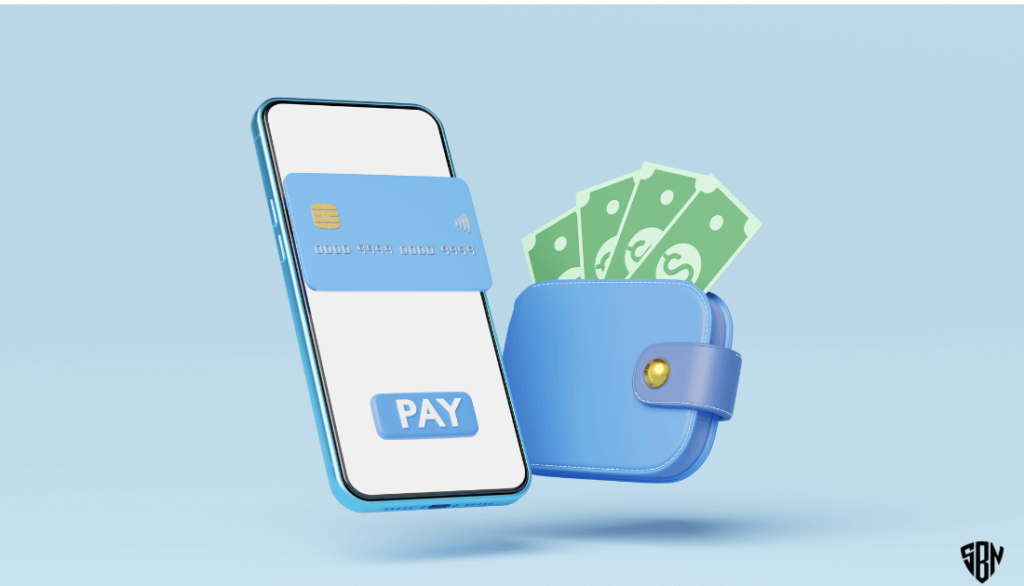Are you wondering how to control your monthly grocery budget without using coupons? After complete research, we find different techniques to spend less money on grocery bills. Surprisingly, my husband and I used the following methods and got outstanding results. We have brought our grocery costs down from $500 to $200.
Over the last two years, the cost of feeding a family has sharply increased. According to a recent survey, the average family spends 10% to 12.5% of their yearly income on food budget in the United States.
People use coupons to save money on groceries, but clipping coupons is hectic and time-consuming. It is possible to save money on groceries without needing coupons or bargain-hunting for discounts.

How Much Should You Spend on Groceries?
While creating the budget, people have many questions in their minds. How to identify a reasonable budget amount for food? A financial expert Dave Ramsey suggests spending 10% to 15% of income on groceries and dining out.
However, many think nobody can choose a specific arbitrary percentage for our food budget. The food’s cost varies based on income, family size, geographical location, and food eaten types.
USDA food plan reports that a family of four spends approximately $1,232 monthly in a sensible food plan. Junk food, coffee, and restaurant meal cost does not include in a sensible food plan.
The following table shows the weekly and monthly average food budget costs according to the household family members.
| Number of People in Family | Weekly Food Budget($) | Monthly Food Budget($) |
| 1 male adult (1 Family Member) | 72 | 314 |
| 1 male and 1 female adult (2 Family Members) | 134 | 582 |
| 1 child and 2 adults (3 Family Members) | 190 | 825 |
| 2 children and 2 adults (4 Family Members) | 232 | 1,005 |
| 2 children, 2 adults, and 1 teen(5 Family Members | 330 | 1,429 |
| 2 children, 2 teens, and 2 adults (6 Family Members) | 403 | 1,750 |
Best Ways to Save Money on Groceries Without Coupons
Here we share the 30 easiest ways to 50% slash your food budget and save money on groceries, even in 2024.
Prepare a Meal Plan:

Meal planning is one of the most effective and easiest ways to reduce your grocery bill. A well-defined plan helps to make a grocery list containing only necessities.
Avoid impulse purchases and unnecessary trips to the store because they can completely break your budget. It is essential to stick to a budget when setting one.
However, it may be challenging for those who never used a grocery budget before and have limited experience setting one up. A norm should be established as the first month is a starting point for the next few months.
Refine your budget over the next three months as soon as you have a realistic budget for your family. The food budget is one of the most underestimated categories by families just beginning to budget.
Create a Grocery List:

We always made a list of our desired shopping items whenever my husband and I went to our nearby local grocery store.
Firstly, we open our pantry, refrigerator, or freezer to get complete details of food items. We check what we have in our stock and our weekly need items.
This practice helps us to avoid buying unnecessary items. You should also follow this technique and check the refrigerator or pantry to get an idea about food inventory before leaving the house. A recent report states that 88.6% of US citizens go shopping without a plan and waste a lot of money buying unnecessary items.
Additionally, if you make this habit of spending less and saving more, you can control your impulse purchases and save up to 23% on grocery bills. These can quickly eat up your entire budget if you’re not careful.
Choose the Right Grocery Store:

Grocery stores seem like a necessity everywhere you go in the world. The price of many items is different in all grocery stores.
To save money, first, you should explore the grocery stores in your area and determine different product average prices. You can also divide your shopping between stores to get the best price. Switching to a new grocery shopping method can save 30% to 50% on purchases.
Lidl, Discounters, Aldi, Walmart, Trader Joe’s, warehouse clubs, big box stores, and dollar stores are great lower-priced grocery stores. If you find these stores in your area, you must visit them to get the most affordable prices.
Look for Buy1Get1 Deal:

Most grocery stores offer discounted promotions almost every week, which has become quite common. You can save 50% on specific items if you avail of the Buy1Get1 deal.
In the future, my ultimate goal is to benefit from the discounts and not buy anything at the total price. When you find a Buy1Get1 deal on a product you use regularly, you should not hesitate to take advantage of the half-price sale.
Use Store Brands:
Save money by shopping from store brands instead of name brands. You can save up to 30% by purchasing from the store brand without clipping coupons. Compared with national brand items, generic brands items have lower prices.
Buy in Bulk:

It is not a wise decision to buy food items in bulk. There is a risk of throwing out a lot of it if you or your family can’t consume all the items before it goes bad. Besides some grains, all food items have a short life, and you cannot use them for long. On the other hand, buying nonperishable items in bulk is a wise decision.
Stock up:

Stock up is the easiest way to save enough money. For example, instantly grab the lowest price opportunity if you find any required household item on sale. Stock up that product in large quality to avoid paying the total price later.
The sales cycle lasts for 6 to 8 weeks and offers excellent deals. If you want to buy in bulk, be sure they are long-lasting and check the products’ expiration dates. However, ensure adequate freezer space to buy bulk ground beef or chicken breasts.
Use Sales Flyers:
Spend less on shopping by using sales flyers. Many sales are happening right now, so keep an eye on it to get an advantage. Browse flyers each week on retailers’ websites and click on the discounted foods to add to your shopping list. You will experience less spending when you add all these items to the things you have in your house while creating the family’s weekly menu.
Avoid Impulse Buys:
Along with a meal plan and budget, avoiding impulse purchases is vital to saving money. It would be best if you went shopping with a full stomach. A layout design has been developed in grocery stores to encourage impulse purchases. For example, they place all the expensive products at eye level. You only need to stick to your meal plan and not buy unnecessary items.
Use Homemade Frozen Food:

It is difficult for me to devote time to cooking at night, being a parent of two small children. In these conditions, I use frozen foods to save time and energy. Nowadays, the prices of frozen food items are also sharply increasing, distorting our budget. We plan to prepare homemade frozen meals for our families and friends to save money.
Compared to buying frozen food, it is cost-effective and healthier because you know the used ingredients. Freeze anything for a long time. For example, preserve milk for 3 to 6 months or meat for 3 to 12 months in the refrigerator. However, you could not freeze all the food items, such as hard-boiled eggs, mayonnaise, etc.
Use Cheap Foods:
The best cheap and healthy foods include:
- Whole chicken
- Oats
- Brown rice
- Potatoes
- Tuna fish
- Ground turkey
- Beans
Find Cheaper Alternatives:
Next time at the grocery store, save your last receipt and mark down the items on the receipt that cost you the most. Save considerable money on your grocery bills by choosing low-cost alternatives.
Shop Late at Night:
I have used this method for a long time to decrease my grocery bill. At most grocery stores, you can regularly find a massive discount on meat after 9 pm, along with all the other things that are about to expire in the next few days.
Enjoy Senior Discount Days:

Even though some grocery chains no longer offer senior discounts, many seniors still benefit from the savings some retailers offer. Senior citizens should inquire at their local supermarket to see if they would give them a discount. If they shop on a specific day of the week, they usually get 5% or 10% off the total bill.
Stop Buying Convenience Foods:
You have to pay more for convenience foods than for natural foods since their popularity is due to their convenience for consumers. You have to pay twice for the items that start with “pre.”
It includes pre-made salads, pre-packaged snack foods, pre-shredded cheese, pre-assembled food kits, pre-packaged crackers, and pre-cut fruit and veggies. If you want to buy that costly item, choose the heaviest bag in weight.
Use Money Savings Apps:

Join different loyalty programs or rewards programs through the store’s apps and use their digital coupons to save money.
The internet is full of money-saving apps to help you save quite a bit on things you purchase. The most legit apps are Ibotta, Fetch, Checkout51, and Shopkicks.
Grow your Own:

The best thing about being a home gardener is the ability to grow veggies. Our family constructed two raised gardens a few years ago, where we grow various vegetables, including tomatoes, peppers, zucchini, beans, onions, peas, and herbs.
If you also have a talent and time, you should grow your produce at home to cut your grocery expenditures. You don’t need a huge garden space to grow fresh fruits and vegetables.
Visit Farmer’s Market:

A local farmer’s market is a great option to spend less. Easily find fresh produce and milk, eggs, meat, and other things at an affordable price. It is a reality only some things will be cheap at a farmer’s market. However, you get a great deal if you wait until the market closes. A reasonable offer will have to be made for the box of produce that has managed to remain if you intend to buy it.
Conclusion
Maintaining your budget can be easier if you adopt the abovementioned habits. Using them causes lower grocery bills and meeting your financial goals faster.
You are sure to have more money in the future to use for something fun. You could use this money for a babysitter, a delicious dinner at a restaurant where you do not have to cook, or you could invest in the future.
The budget hacks you have learned in this article will allow you to save even more money on groceries during your next trip to the grocery store. Therefore, try them out on your next grocery shopping trip to learn how to spend less.
After following these techniques, it will surprise you how much money you still have in your pocket. It is also possible for you to become more creative with your cooking if you do this as well.
More from the Save Money:
